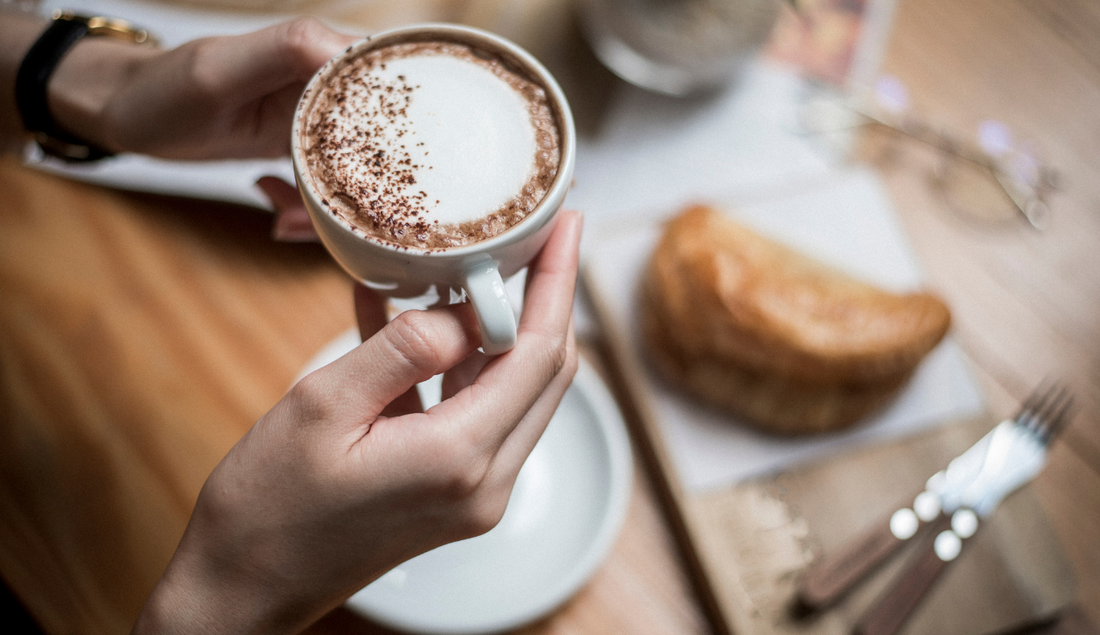
What’s the Best Coffee to Serve in a Coffee Shop?
Share
One of the first decisions you’ll have to make as a coffee shop owner is which coffee you serve. The coffee beans you use will become your brand, your experience and your reputation. So how do you choose? With single origins, blends, dark or light roasts, washed or natural processed coffees to pick from.
Coffee Freshness is Number 1
Coffee tastes best within two to four weeks of roasting. Beyond that, the volatile aromatics dissipate, and your coffee can taste flat, stale and one-note. Resist the temptation to buy in bulk from a cheaper supplier. Instead, schedule smaller, regular delivery of coffee beans from a roaster you can trust.
Focus on Roast And Coffee Bean Types
Many coffee shop owners default to “espresso blend” coffee beans just because it’s cheap. An espresso blend that does not suit your menu might not be the best option though. Instead, think in terms of versatility and balance.
Espresso blends are designed to “perform” under pressure. Milk, variable temperatures, and extraction fluctuation have a bigger impact on single-origin coffees than expertly crafted espresso blends.
Single origin coffee beans can be a great “signature” espresso or filter coffee to showcase unique floral, fruity, or chocolaty notes. A rotating house blend plus seasonal single origin is a great way to give your menu some consistency and variety. Rotate the coffee beans to keep things interesting.
Coffee Bean Type And Processing Also Matter
Coffee variety and processing methods also impacts flavour and consistency.
- Arabica is the “norm” for specialty coffee, sweeter, more nuanced.
- A little Robusta in a blend can help crema, body, and flavour stability under milk
Processing methods further nuance the acidity, body, and fruitiness, washed for brightness, natural for sweetness, and honey for balance.
When you are serving filter or pour-over coffee, single origins are where you can shine. When you focus on espresso, though, blends that are designed to produce a consistent result under milk are more likely to perform predictably in a high-volume environment.
Create a Balanced Coffee Menu
Customers like choice but do not want to be overwhelmed. A balanced, structured coffee menu is a good way to keep your offering simple but compelling. Consider the following categories:
Espresso and black coffees: espresso, doppio and americano.
Milk-based espresso drinks: flat whites, lattes, cappuccinos, and macchiatos.
Cold or alternative brews: iced lattes or cold brew coffee.
By creating a clear but flexible menu, you can both educate customers and allow your baristas the space to flex their skills.
The Coffee Beans We Stock at Cotswold Coffee
At Cotswold Coffee, we take our bean range seriously, our collection of coffee beans is carefully curated to serve the needs of cafés, coffee shops, offices, and discerning home brewers alike. We aim to offer both consistency and creative options, so you can build a menu your customers love.
A Snapshot of Our Bean Range
On our “Coffee Beans” page, you’ll currently find a selection of premium whole-bean coffees, from base blends to regional single origins. Some standouts include:
-
Cotswold Rainforest Alliance Java Beans - A bold, full-bodied espresso with caramel sweetness, cocoa hints & low acidity. 70% Arabica, 30% Robusta.
-
Cotswold Grande Reserve Beans - A medium body, 100% Arabica blend with a sweet, clean and balanced taste profile.
-
Cotswold Peru & Central America Beans - Perfectly balanced in body with winey berry notes and a crisp, clean finish.
-
Cotswold Organic Peru & Central America Beans - A balanced, high-altitude coffee bean with winey berry notes & a crisp finish. Sourced from Cenfrocafe Cooperative, ensuring quality & sustainability.
We stock around fourteen different coffee beans at present, giving cafés a good mix of blends and origin beans to rotate or mix into menus.
Match The Coffee to Your Equipment And Skills
Coffee beans, though, are only as good as the extraction equipment and baristas. Key things to consider include:
- Machine and grinder quality (look for even pressure and temperature).
- Water quality (filtered water will prevent off-flavours and keep equipment clean).
- Barista training (develop tamping, extraction time, and milk texturing).
As with all things in coffee, great beans and skill work together to create a great cup. Regular calibration and tasting sessions are essential to maintaining high standards across every cup.
Keep an Eye on Consistency And Feedback
Even after your coffee menu is live, your work is not done. Routine coffee tasting sessions, customer feedback and internal quality controls are a must. By actively looking for signals that something is off (flavour, machine, grinder, etc. ), you can take proactive steps to make your coffee taste great.
Summary
Ok. So. What’s the best coffee to serve in a coffee shop?
There isn't really a right answer, but there is an approach:
- Focus on freshness, balance, consistency and relevance
- Partner with a roaster you trust (or roast in-house)
- provide a consistent house blend plus single origins
- invest in your equipment and training
- actively listen to customer feedback to create a coffee experience that will keep people coming back.
That’s what we do at Cotswold Coffee. We love to help cafés, from small independents to large chains, to get the best from their coffee beans, machines, and baristas. If you’re after some advice, training or support to refine your coffee shop offering don't hesitate to get in contact. We’d love to help you serve something special.
